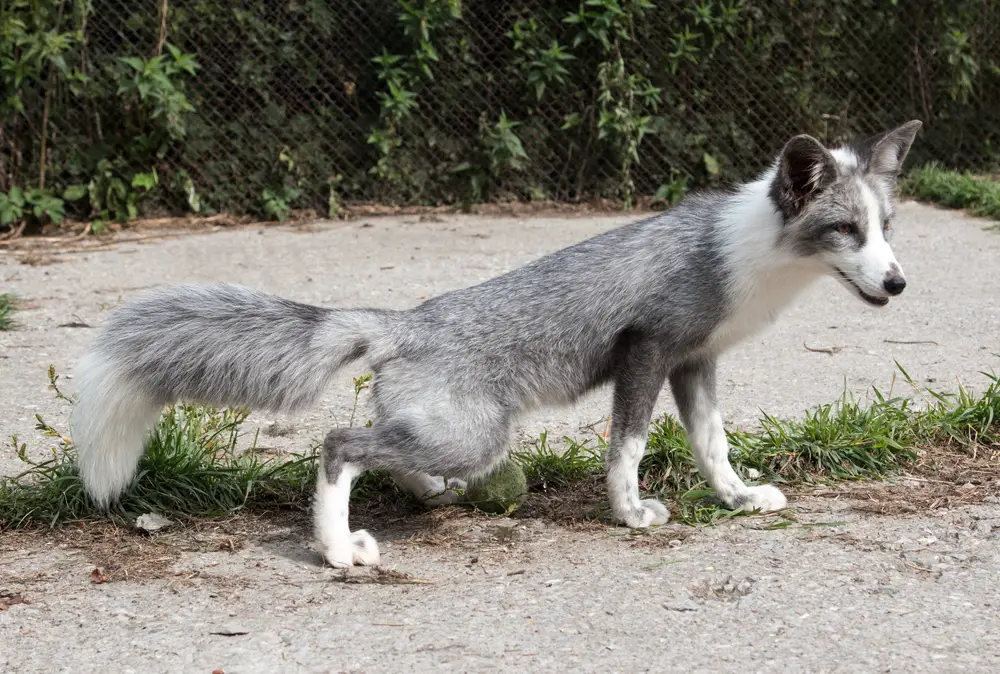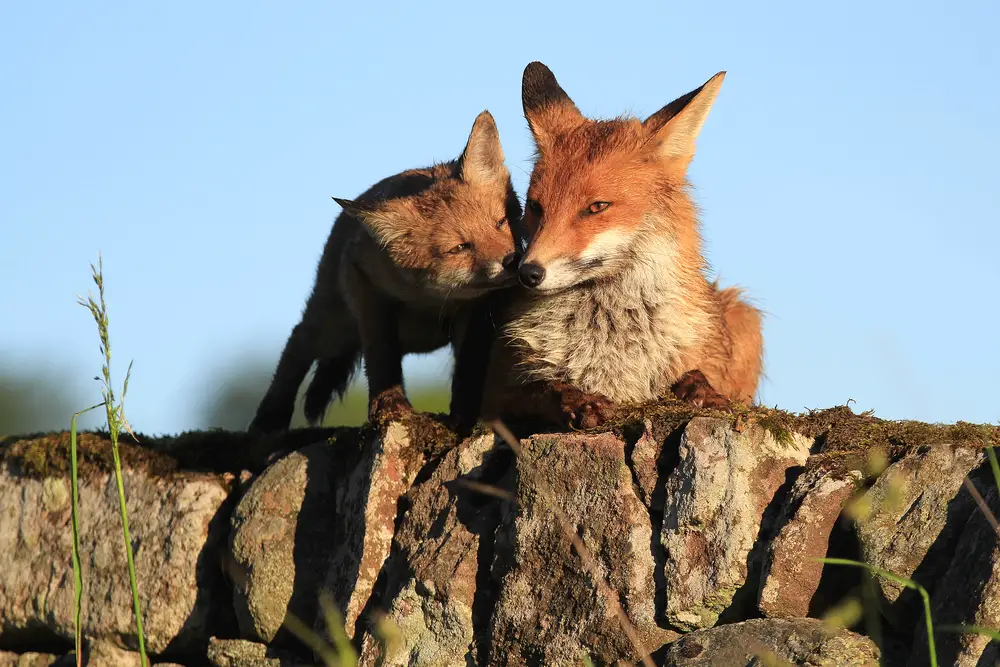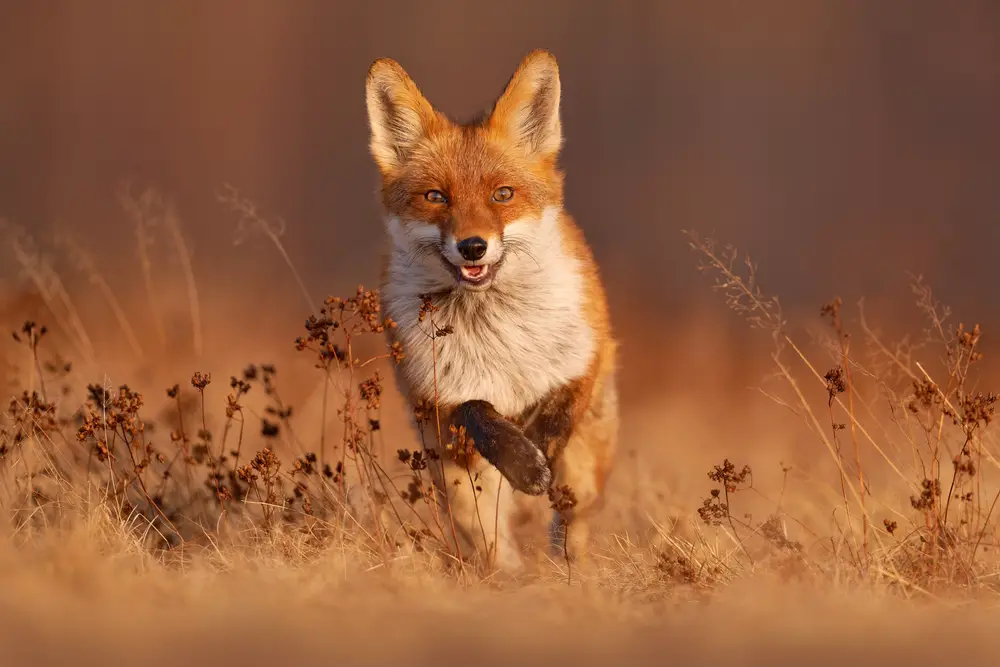In the heart of bustling cities, where the rhythm of human life intertwines with the natural world, a remarkable transformation is unfolding. The red foxes of urban landscapes, those cunning creatures of folklore and story, are not just surviving but evolving before our eyes. This evolution is not merely a tale of adaptation to the concrete jungles we’ve built but a profound reflection on the interconnectedness of all life forms.
As these foxes navigate the streets and alleyways of our cities, they offer us a mirror into our own adaptability, the impact of our actions on fellow beings, and the potential for a harmonious coexistence. This story of urban foxes and their journey towards traits akin to domestication opens up a broader dialogue about consciousness, spirituality, and holistic well-being in the context of our relationship with the natural world.
The Urban Fox Evolution

In the vast expanse of geological time, a mere century may appear as a fleeting moment, but within this seemingly brief span, the red foxes of London have embarked on a remarkable odyssey of adaptation. These creatures, once hailed as quintessential denizens of the untamed wilderness, have seamlessly woven themselves into the intricate fabric of England’s bustling capital. The harmonious coexistence that has blossomed between urban foxes and the sprawling metropolis is a poignant testament to the astonishing resilience of nature and its extraordinary capacity to evolve in response to the ever-shifting landscapes crafted by humans.
Metamorphosis in the Cityscape
The physical transformations witnessed in urban red foxes are nothing short of breathtaking. While it’s easy to dismiss these changes as mere cosmetic alterations, they transcend the superficial. They delve into the very essence of the fox’s being, signifying a profound shift forged in the crucible of city life. The evolutionary process that has orchestrated these alterations is a riveting example of nature’s ingenuity when confronted with landscapes dominated by human presence.
In the heart of the city, where towering skyscrapers cast shadows over once-wild terrain, the urban fox has embarked on an intricate dance of adaptation. Their smaller heads and shorter, wider snouts are not arbitrary adjustments but meticulously crafted responses to the multifaceted challenges and opportunities that urban living presents. Each altered feature tells a story of survival in a world where natural habitats have given way to concrete jungles.
Blurring the Boundaries
Among the myriad mysteries of the urban fox evolution, perhaps one of the most captivating is the gradual erosion of the disparities in size between male and female foxes. In the pristine realms of the natural world, these size differences often correspond to distinct gender roles governing mating rituals, hunting strategies, and nurturing responsibilities. Yet, within the tapestry of the urban fox community, these well-defined boundaries have begun to blur.
The transformation unfolding in urban foxes challenges traditional norms, echoing the adaptability and flexibility demanded by urban life. In a metropolis where survival hinges on resourcefulness and cooperation, traditional gender roles find themselves yielding to a more egalitarian approach to living. The city becomes a stage where foxes, irrespective of their gender, unite in their quest for sustenance and security.
Domestication Syndrome and Human Impact

The concept of “domestication syndrome” presents an intriguing lens through which we can decipher the evolution of urban foxes. It unveils a captivating narrative of gradual transformation, akin to the unfolding of a delicate tapestry, as these enigmatic creatures navigate the intricate ecosystems of the urban landscape. This transformation encompasses a spectrum of changes, ranging from shifts in physical appearance, such as shorter snouts and smaller heads, to nuanced behavioral adjustments that render them increasingly compatible with the intricate rhythms of human activity.
Evolution by Design, Not by Chance
The journey of urban foxes is far from a haphazard, random process; it is a deliberate adaptation carefully sculpted in response to the multifaceted challenges presented by urban life. As these resilient foxes navigate the labyrinthine web of city streets, towering buildings, and intricate human interactions, they undergo a transformation guided by intention rather than chance. Their metamorphosis stands as a resounding testament to the profound influence of human activity on the natural world.
The impact is profound, as the urban environment becomes a crucible for adaptation, crafting urban foxes uniquely suited to the complex tapestry of city life. These adaptable creatures cease to be mere spectators of human activity; they become active participants in shaping their own destiny within the urban landscape.
Guardians of Urban Wildlife
In the midst of this remarkable transformation, we find ourselves bestowed with a profound responsibility—guardianship of urban wildlife. The gradual convergence of urban fox traits towards those reminiscent of domesticated pets serves as a poignant reminder of our stewardship obligations. As we bear witness to their journey towards greater compatibility with our human-dominated world, we are compelled to delve into the depths of our consciousness and reflect upon the profound connections that bind us to the natural world.
The urban fox’s evolution is a living testament to the intricate dance between humans and wildlife, a dance that transcends mere coexistence and delves into the realms of interconnectedness. These adaptable creatures beckon us to explore our roles as custodians of urban ecosystems, nurturing a sense of responsibility that extends beyond the confines of our own species.
Comparing Urban and Rural Foxes

The divergence observed between urban and rural foxes transcends the simplistic realm of habitat preference. It vividly illustrates the profound influence that environmental dynamics wield over species’ evolutionary trajectories. In a meticulous study that scrutinized 111 skulls of adult red foxes collected around London between 1971 and 1973, striking distinctions in skull morphology between their urban and rural counterparts were unveiled.
The Urban Phenotype Unveiled
Urban foxes, having skillfully acclimated to the intricacies of human-dominated landscapes, bear witness to a distinct set of physical characteristics. Beyond their shorter, wider muzzles, which are a direct response to the unique challenges posed by urban living, this transformation transcends mere facial features. It encompasses smaller braincases, a marked reduction in sexual dimorphism, and even subtle shifts in behavior. These alterations are anything but superficial; they represent a poignant reflection of the dynamic interplay between urban foxes and the environment they have come to call home.
Within the cacophony of city life, where towering structures cast shadows over once-wild terrain, the urban fox is engaged in a profound dance of adaptation. Every aspect of their being, from their anatomy to their behavioral repertoire, bears the imprints of this urban odyssey. These foxes have not merely survived; they have thrived by evolving in response to the challenges and opportunities presented by their new urban reality.
Echoes of Domestication
What renders this morphological evolution particularly captivating is its uncanny resemblance to the transformations witnessed during the nascent stages of domestication in dogs and cats. The parallels drawn between urban foxes and their domesticated counterparts hint at the existence of shared environmental triggers for such profound metamorphosis, transcending the boundaries of species. As urban foxes learn to adapt to an environment saturated with human refuse and profoundly altered ecosystems, they are, in essence, crafting traits that enhance their adeptness at navigating this brave new world.
The echoes of domestication resonate through their transformations, underscoring that the process of adaptation within urban ecosystems holds lessons that extend beyond species boundaries. It beckons us to explore the interconnectedness of life forms, where changes in one facet of the ecosystem ripple through the entire web of existence, giving rise to adaptations in the most unexpected of places.
Guardians of Evolution
In the compelling journey of urban foxes, we encounter a fundamental truth—a profound interconnection that binds all life forms. Their adaptation becomes emblematic of their resilience and resourcefulness, but it also serves as a potent reminder of the intricate dance of life on our planet. It reminds us that every species, whether wild or domesticated, plays a role in shaping the evolution of others within the shared tapestry of their habitat.
The story of urban foxes is not merely a narrative of adaptation; it is a testament to the collective guardianship of evolution. As we witness their transformations in the heart of our cities, we are inspired to reflect upon our roles as stewards of the complex ecosystems we inhabit. We are called upon to nurture a deep sense of responsibility, one that extends beyond our own species, fostering an awareness of the delicate threads that weave the tapestry of life.
Tips for Coexisting with Urban Wildlife
As urban foxes become more common, it’s essential to foster a relationship of mutual respect and understanding. Here are some practical tips for coexisting peacefully with these adaptable creatures:
- Respect Wildlife Boundaries: Always observe foxes from a distance. Feeding wild animals can alter their natural behaviors and make them dependent on humans, which is not beneficial for their well-being.
- Creating Safe Spaces: Make your garden or outdoor area safe for wildlife by ensuring that there are no open garbage bins or food sources that might attract foxes. Instead, consider planting native species that provide natural food sources and shelter for local wildlife.
- Appreciating the Connection: Take a moment to appreciate the presence of wildlife in urban areas. Recognizing the spiritual connection between humans and animals can enrich our understanding of our place in the natural world and foster a sense of stewardship and care.
The Future of Urban Foxes and Their Significance
The future of urban foxes stands at the intersection of uncertainty and possibility. Their numbers ebb and flow, influenced by a complex interplay of factors. Habitat changes, driven by the ever-expanding urban landscape, create a dynamic backdrop for these adaptable creatures. Fluctuations in food availability, influenced by both natural cycles and human interventions, challenge their survival strategies. Human interactions, ranging from compassionate coexistence to inadvertent disruptions, further shape their urban experience.
Resilience and Adaptability
Amidst this uncertainty, the enduring quality of urban foxes is their adaptability and resilience. These remarkable traits have allowed them to persist in environments once considered incompatible with their existence. Their journey from the natural wilderness into the heart of our cities is a testament to the extraordinary capacity of life to find a way, to adapt, and to thrive even in the face of adversity.
Towards Integrated Coexistence
The evolution of urban foxes carries a profound message for humanity. It challenges our preconceived notions of the boundaries between the wild and the domesticated. These foxes, through their gradual transformation, beckon us to reconsider the rigid classifications we impose upon the animal kingdom. They inspire us to envision a future where humans and wildlife share urban spaces in harmony and mutual respect.
Acknowledging Spiritual and Ecological Bonds
In their journey from the wilds to our cities, urban foxes bring to the forefront the spiritual and ecological bonds that tie all life forms together. Their presence reminds us that we are not isolated beings but participants in a grand, interconnected tapestry of life. As we encounter these adaptable creatures in our urban landscapes, we are offered an opportunity to reflect on our place within this intricate web of existence.
A Glimpse into a Harmonious Future
The tale of urban foxes is not just a narrative of urban wildlife but a parable of resilience, adaptability, and the potential for integrated coexistence. It hints at the possibility of a future where humans and wildlife share spaces with mutual respect, recognizing the spiritual and ecological connections that bind us. In their journey, we glimpse a world where harmony prevails and where the line between the wild and the domestic blurs, ushering in a new era of conscious cohabitation.
Conclusion
The evolution of urban foxes in London and beyond is a compelling story of adaptation, resilience, and the unforeseen pathways of nature. As these creatures navigate the urban landscape, they mirror back to us the possibilities for coexistence and mutual adaptation in an ever-changing world. Their journey is a reminder of the impact our environments have on the natural world and the importance of approaching our cohabitants with understanding, respect, and a sense of shared destiny.
In reflecting on the transformation of urban foxes, we’re invited to consider our role in the larger ecological and spiritual tapestry of life. The adaptability of these foxes not only speaks to the power of evolution but also to the potential for a deeper connection and harmony between humans and the natural world. As we move forward, let us embrace the lessons of adaptability, resilience, and coexistence that urban foxes teach us, fostering a world where all beings can thrive in balance and mutual respect.
Sources:
Each altered feature tells a story of survival in a world where natural habitats have given way to concrete jungles.
Guardianship of urban wildlife.
What renders this morphological evolution particularly captivating is its uncanny resemblance.
Reconsider the rigid classifications we impose upon the animal kingdom.
This Site Was Inspired By An Interest in Protecting the Environment
We had the privilege and joy of learning from Dr. Charlie Stine who instilled a love for the natural world through incredible field trips with the Johns Hopkins Odyssey Certificate program in Environmental Studies. At the time, the program was endorsed by the Maryland Department of Natural Resources. Sadly, after Dr. Stine retired, the program was phased out. We hope that we honor his legacy by shining a bright light on environmental issues and sharing good news about the success of various conservation programs when possible.
